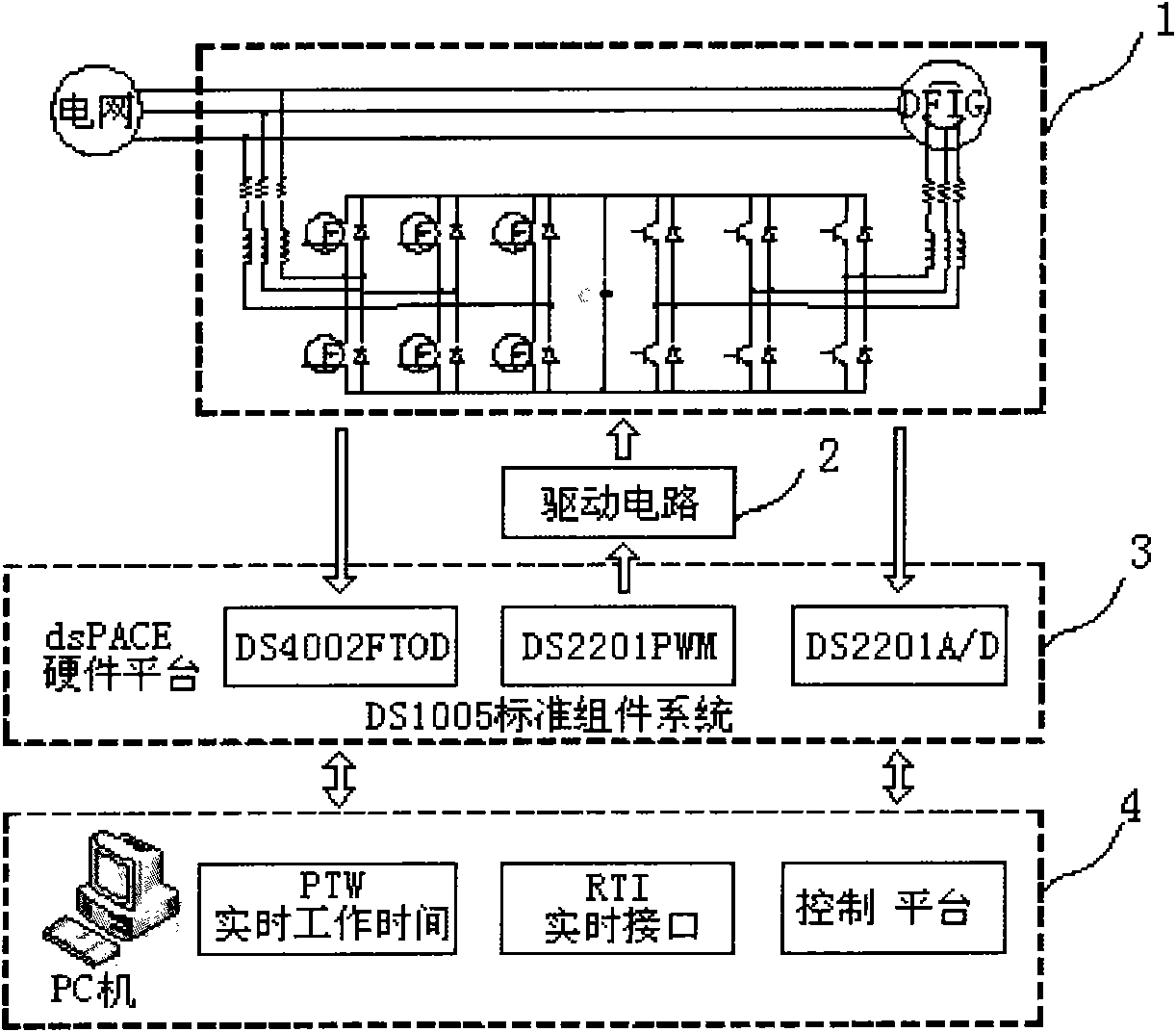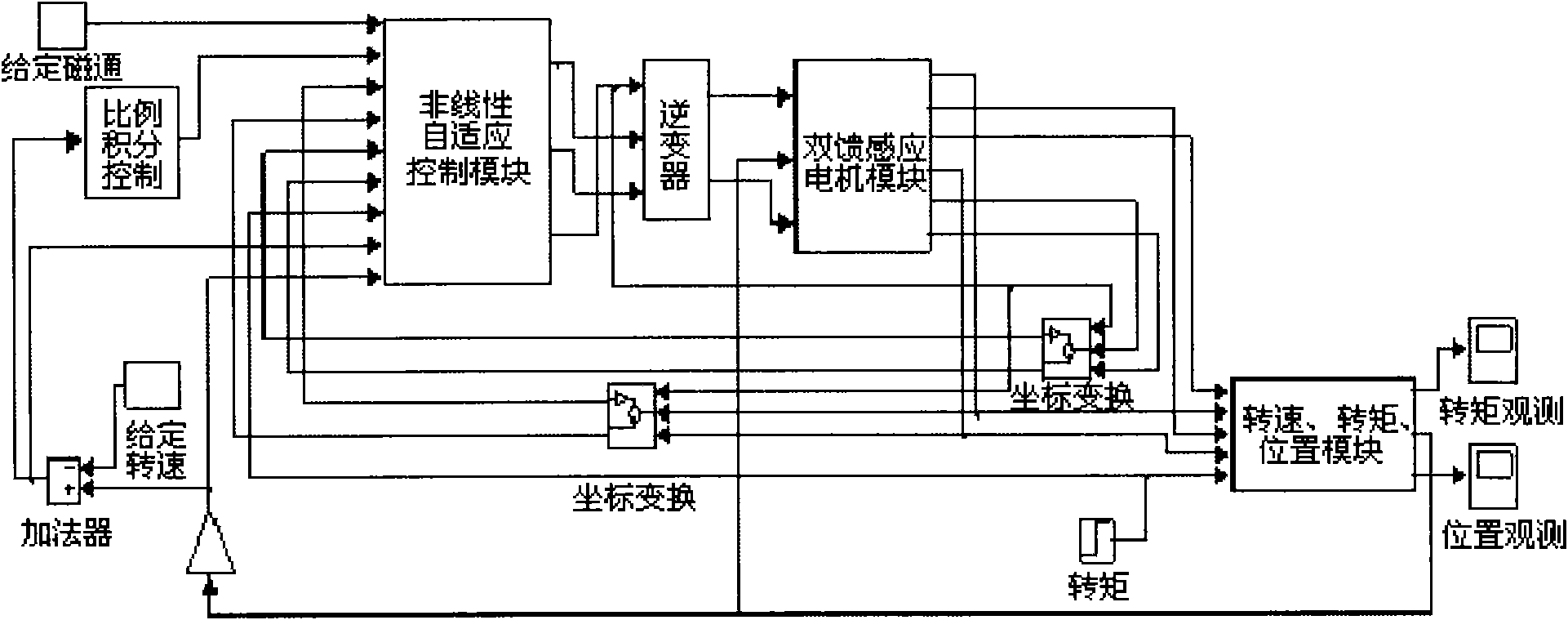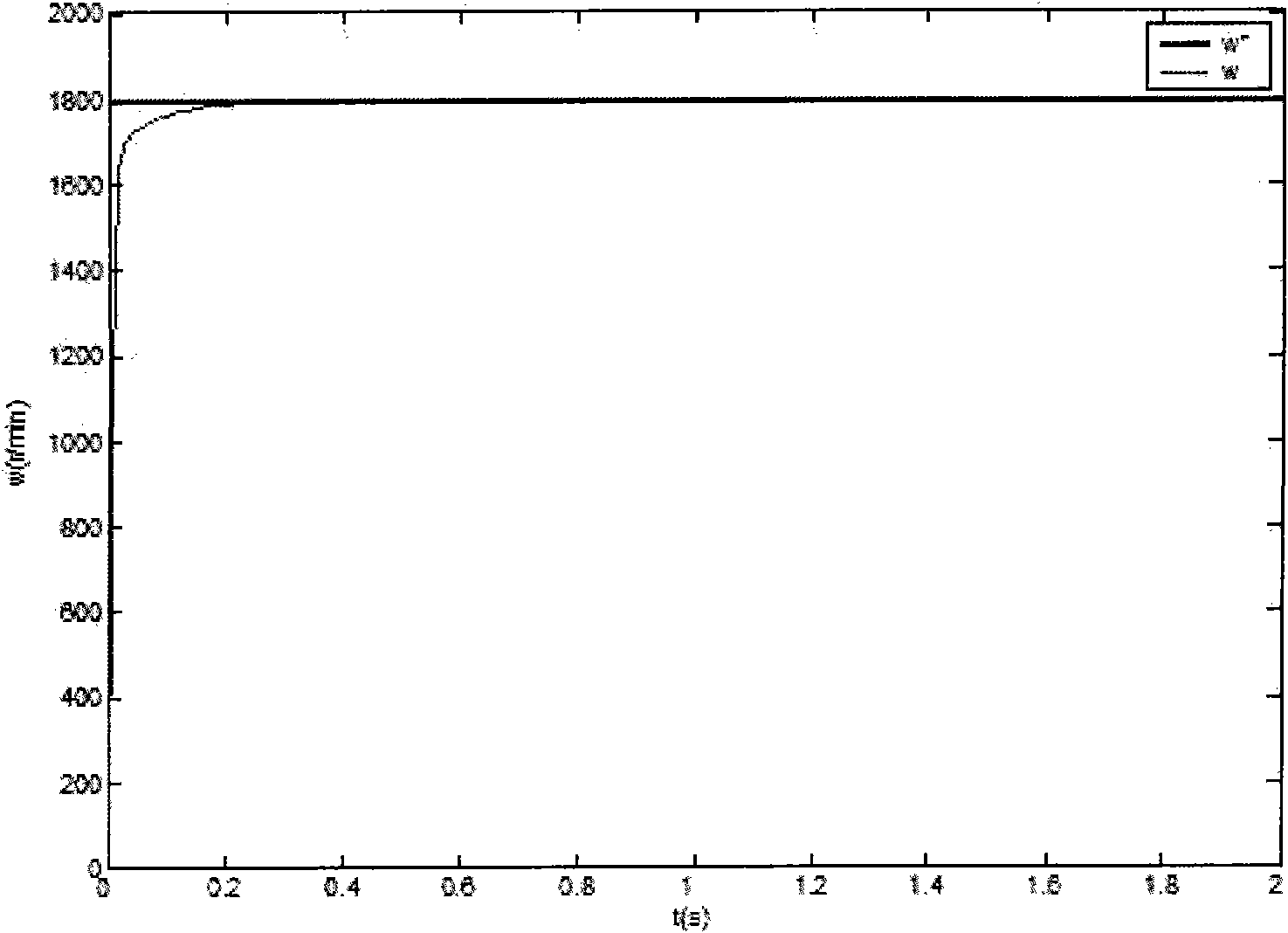Adaptive passivity-based control (PBC) method for doubly-fed induction wind driven generator
A doubly-fed wind power generation and wind power generator technology, applied in the field of control, can solve problems such as system control instability
- Summary
- Abstract
- Description
- Claims
- Application Information
AI Technical Summary
Problems solved by technology
Method used
Image
Examples
Embodiment Construction
[0043] like figure 1 The SPACE integrated structure diagram of the doubly-fed induction wind turbine control system is shown. The actual data of the stator current and rotor speed of the variable-speed constant-frequency doubly-fed wind power generation system 1 are sent to the measurement and control system dSPACE hardware platform 3. The dSPACE hardware platform 3 includes DS2201 processing board responsible for generating PWM signals required for inverter, DS2201A / D interface board responsible for collecting three-way current signals, DS4002 FTOD interface board for collecting speed signals, dSPACE hardware platform 3 pairs of data processing and sending to adaptive passive After the adaptive PCB method tracking calculation is performed in the controller 4, the data is converted by the dSPACE hardware platform 3 and then sent to the drive circuit 2 to control the variable speed constant frequency double-fed wind power generation system 1 to stabilize. Taking DFIG as the co...
PUM
 Login to View More
Login to View More Abstract
Description
Claims
Application Information
 Login to View More
Login to View More - R&D
- Intellectual Property
- Life Sciences
- Materials
- Tech Scout
- Unparalleled Data Quality
- Higher Quality Content
- 60% Fewer Hallucinations
Browse by: Latest US Patents, China's latest patents, Technical Efficacy Thesaurus, Application Domain, Technology Topic, Popular Technical Reports.
© 2025 PatSnap. All rights reserved.Legal|Privacy policy|Modern Slavery Act Transparency Statement|Sitemap|About US| Contact US: help@patsnap.com



